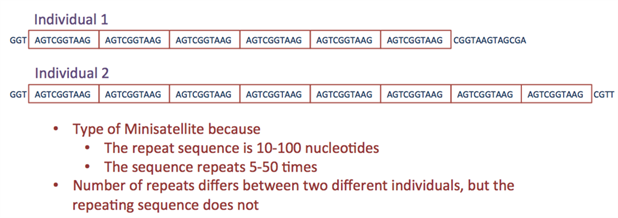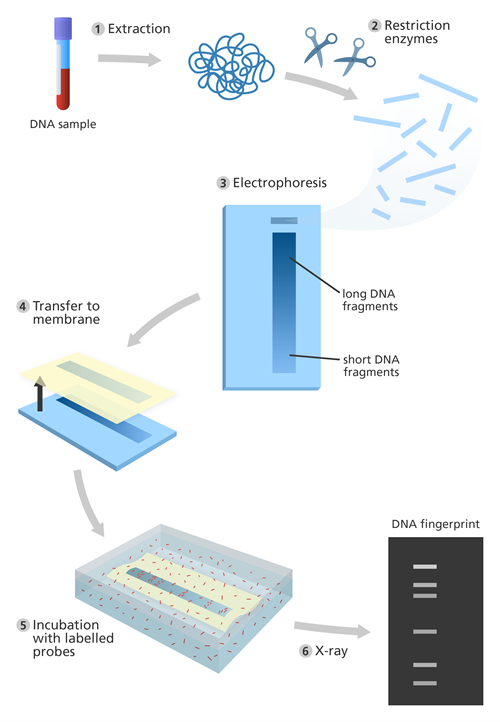PDF chapter test TRY NOW
There are 3 billion base pairs in the human genome. Did you know that two people's DNA patterns cannot be identical, except identical twins?
Each individuals DNA sequence is unique due to the slight differences in the base pairs. Thus, DNA fingerprinting is an easier and faster method to compare the genetic difference between two individuals.
Important!
Alec Jeffrey developed the technique of DNA fingerprinting.
The technique examines each person's unique DNA sequences and gives distinctive characteristics of an individual that aid in identification.
The variable number of tandem repeat sequences (VNTRs) are used as molecular markers for identification.

VNTRs in two different individuals
In human beings, bulk genomic DNA refers to 99 \% of the DNA base sequences, which are identical. The remaining 1 \% of DNA sequences varies from one person to another. This 1 \% DNA sequence is present as a tiny stretch of repetitive sequences called satellite DNA.
The number of copies of the repeat sequence, also known as VNTRs, varies between individuals, resulting in differences in the size of the DNA segment.
As seen in the above picture, the sequence AGTCGGTAAG is repeated five times in the first individual, and eight times in the second individual. As a result, the second person's DNA segment will be larger, followed by the first person's DNA segment. Thus, it is evident that satellite DNA causes variation within the population.
Important!
The variation in DNA banding pattern reveals differences among the individuals.

Steps involved in DNA fingerprinting
A video on what is DNA fingerprinting:
Application of DNA Fingerprinting:
i. The DNA fingerprinting technique is commonly employed in forensic applications such as crime investigation to identify the culprit.
ii. It is utilised in paternity testing in case of paternity disputes.
iii. Used to diagnose inherited and genetic disorders in prenatal and newborn babies.
iv. It also aids in the research of genetic diversity of population, evolution and speciation.
A video on the applications of DNA fingerprinting:
Reference:
https://www.flickr.com/photos/yourgenome/26915998376
https://upload.wikimedia.org/wikipedia/commons/thumb/3/31/VNTRexample.png/1024px-VNTRexample.png
https://www.youtube.com/watch?v=EEnc3KtJNoU
https://www.youtube.com/watch?v=pFXszAXf4n8
